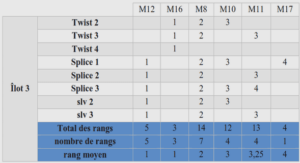Need for Better Energy Efficiency
State-of-the-art review of the co-optimization of design and control for advanced vehicle propulsion systems is concisely synthesized from the latest literatures on powertrain components and vehicle propulsion systems. emis- sions are stringently regulated on the new vehicle models in the worldwide automotive industry. Considering CO emissions of 95 g/km and 143 g/mi are obliged to achieve in EU and US, receptively; whereas, fuel consumption of 5 L/hkm (hkm: hundred kilometers) is mandatory in China. Nevertheless, more stringent energy efficiency targets in terms of COemissions or fuel consumption are under development. The continuously improved energy efficiency targets advance powertrain technologies and innovations, for example, market penetration of battery-electric and hybrid-electric vehicles. Compared with the obliged energy efficiency targets of LDVs, the one of a Heavy- Duty Vehicle (HDV) is less widely controlled by regulations around the world. The main reason is due to the European countries, where a market-driven policy of the energy efficiency is adopted rather than mandatory CO emission targets. However,targets of the energy efficiency of HDVs have been regulated in China and US by Phase 2 and Phase 1 (2014-2018), respectively. In the future, HDVs in all three major markets As a leading player in the automotive market, conventional vehicle must meet the strin- gent regulations on fuel consumption and pollutant emissions. Technologies to improve fuel efficiency concentrate on the continuous improvement of powertrain components, which are essentially composed of an internal combustion engine, a transmission, and a final drive (see Fig. 1.1).
Considering internal combustion engines, their efficiencies are always under im- provement by advanced technologies, which consist of engine downsizing technology [8], turbocharger technology [9], friction reduction technology [10], variable compression ratio technology [11], alternative fuels [12], and the advanced combustion technology [13]. However, details of these technologies are out of the scope of this thesis work. Nonetheless, some of them are used as dimensioning parameters to develop the pre- As for transmissions, current technologies include advanced gear ratio design [14], implementation of higher gear number [15], sophisticated shift strategy [16], highly effi- cient transmission [15], and advanced automatic transmissions [17, 18], which directly influence the fuel consumption of a conventional vehicle. Therefore, the optimization of transmission dimensioning parameters is capable of further improving the energy efficiency.In addition to technologies of engines and transmissions, stop-start systems are implemented to conventional vehicles so that the idling fuel consumption is elimi- nated [19]. Throughout this thesis, the idling fuel consumption is not considered in conventional and hybrid-electric vehicles, due to the wide application of stop-start systems.
Battery electric vehicle, as a technological endpoint to achieve tank-to-wheel zero emis- sion, is continuously penetrating the automotive market around the world. As shown in Fig. 1.2, key powertrain components of a battery-electric vehicle consist of an electric motor/generator, a battery, a power electronics, and a transmission. The main technological concerns on battery-electric vehicles are over the electric vehicle range, battery cost and lifespan, performance in cold weather, maintenance, available charging infrastructures. Nonetheless, the energy consumption of a battery- electric vehicle can be further reduced by improvements on powertrain efficiency, power electronics, aerodynamics, and light-weighting technologies, which enlarges electric vehicle range in turn [20].Recent studies show that the optimized design of power electronics [21], suitable topology of transmission [22], and intelligent control technologies – such as gear shift schedule design [23] and eco-driving technique [24] – are capable of enhancing the powertrain efficiency of a battery-electric vehicle. To meet the desired vehicle performance, single-source vehicle propulsion systems for conventional and battery-electric vehicles are often designed through heuristic methods, such as an iterative process to find suitable powertrain components that meet the requirement. Despite lack of systematic design optimization approach, the design of a battery-electric vehicle can be optimized by finding the best dimensioning parameters of powertrain components such that the energy consumption is minimized. A battery- electric vehicle is optimally designed through multi-objective optimization method by optimizing dimensioning parameters of electric motor and battery size to meet the design targets defined by drivability parameters [25]. Alternatively, genetic algorithm method is also used to optimize the design of an battery-electric vehicle with two-speed dual-clutch transmission at system level [26].



